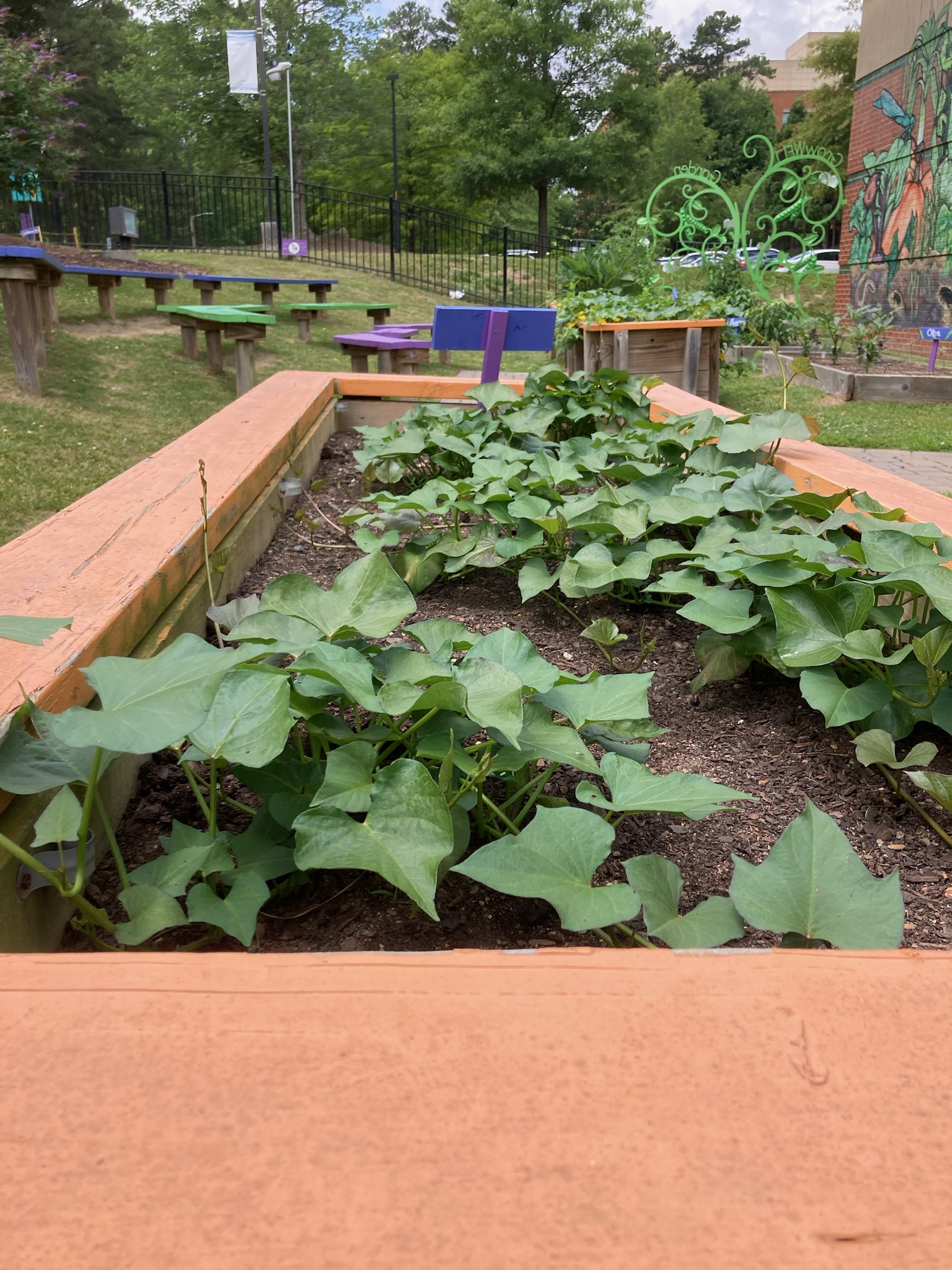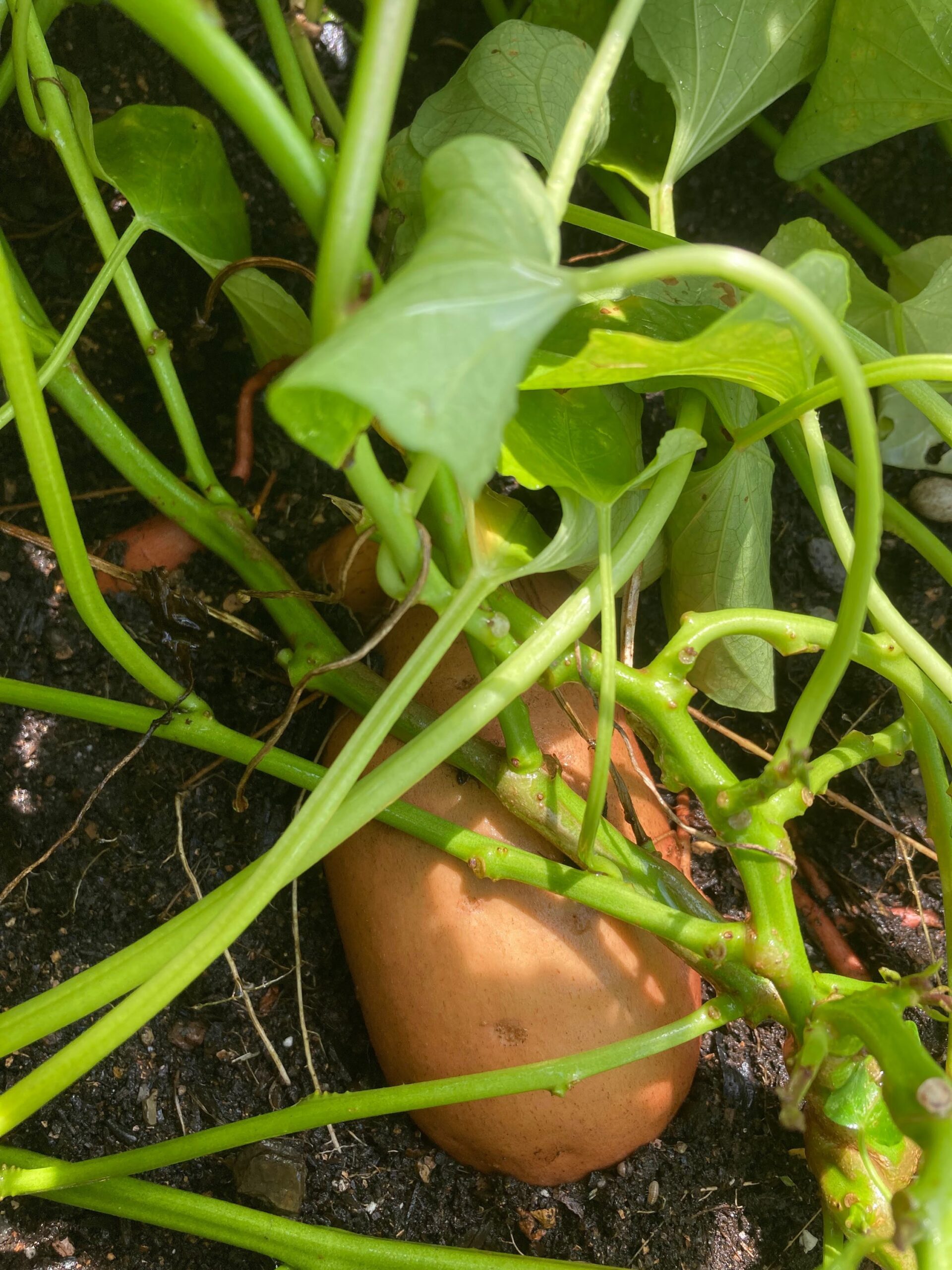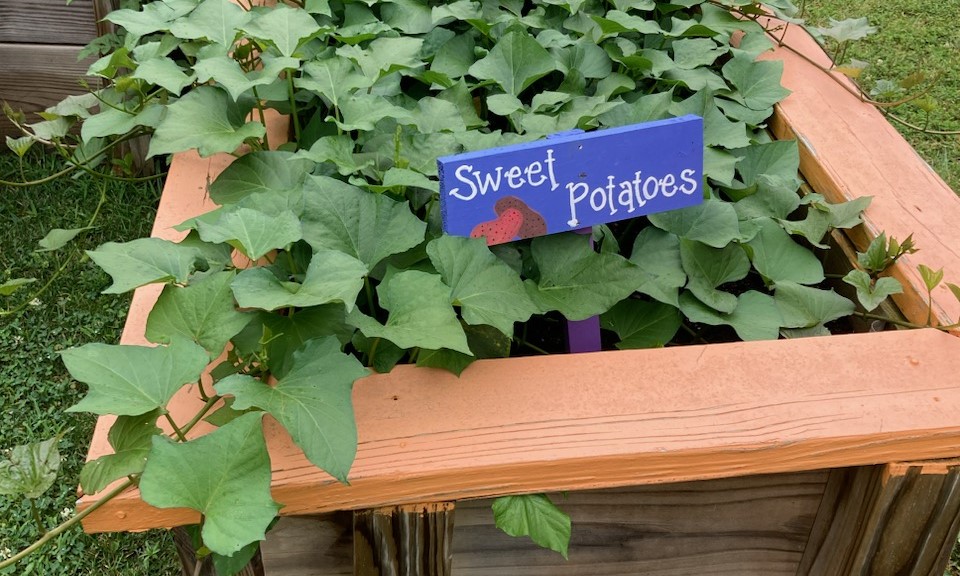
Sweetpotato Maintenance
Anna Glasgow, MAT
Lead Garden Educator
Foliage foliage everywhere! If you planted sweetpotato starts this season, they should be about six to ten weeks old now, and there are leaves everywhere. Even with all this growth, sweetpotato maintenance is relatively easy, and the fruits of your labor will be ready in about two more months. Follow these maintenance tips to ensure a bountiful harvest.
Fun Fact: Have you ever noticed the leaves of a sweetpotato plant look quite different from the leaves of a regular potato plant? That’s because they come from different plant families. Sweetpotatoes belong to the morning glory family and are harvested late summer/early fall, whereas potatoes belong to the nightshade family and are harvested in the spring/early summer. To help differentiate the two, the North Carolina SweetPotato Commission recommends the botanical spelling “sweetpotato” as opposed to “sweet potato”.
Weeding:
The ground, container, or bed holding your sweetpotato plants only need to be weeded for about a month after planting. As the sweetpotato plant grows, the lush foliage acts as a short canopy shading out most weedy competitors.
Watering:
Regular watering is the key to successful sweetpotatoes. Water uniformly and deeply, about 6 inches down. Stick your hand into the soil vertically 4-6 inches. If your knuckles and fingertips stay dry, add more water.
Ideally water in the morning, so the plants are equipped to stay hydrated throughout the long hot day. Drought conditions over several days followed by heavy rain may cause the developing roots to crack and become vulnerable to disease. Too much water can lead to rot, which is why well-draining soil is essential.
Pests/Diseases:
Sweetpotatoes have fewer challenges than most summer crops, but if you think your sweetpotato plants look sick, scroll down to the “Pests/Diseases” section of the Farmers Almanac for common diagnoses and control tactics.

If you find that a large section, or even all, of the leaves appear to be mowed off, that is most likely the nibbling work of a deer or rabbit. Luckily, sweetpotato vines are often vigorous enough that the foliage recovers just fine. It’s a good idea to use netting or fencing to block these furry critters from a second course.
You Can Eat the Greens, too!
Sweetpotato leaves are edible and nutritious for humans, as well. Once your sweetpotato plants look lush, snipping a few leaves here and there will not hurt or stunt the roots below. The greens are rich in vitamin B, ßcarotene, iron, calcium, and more. They can be sauteed, eaten raw in a salad, and added to a stir fry. Explore sweetpotato greens recipes and plan for a delicious sweetpotato root recipe like Black Bean and Sweet Potato Quesadillas.
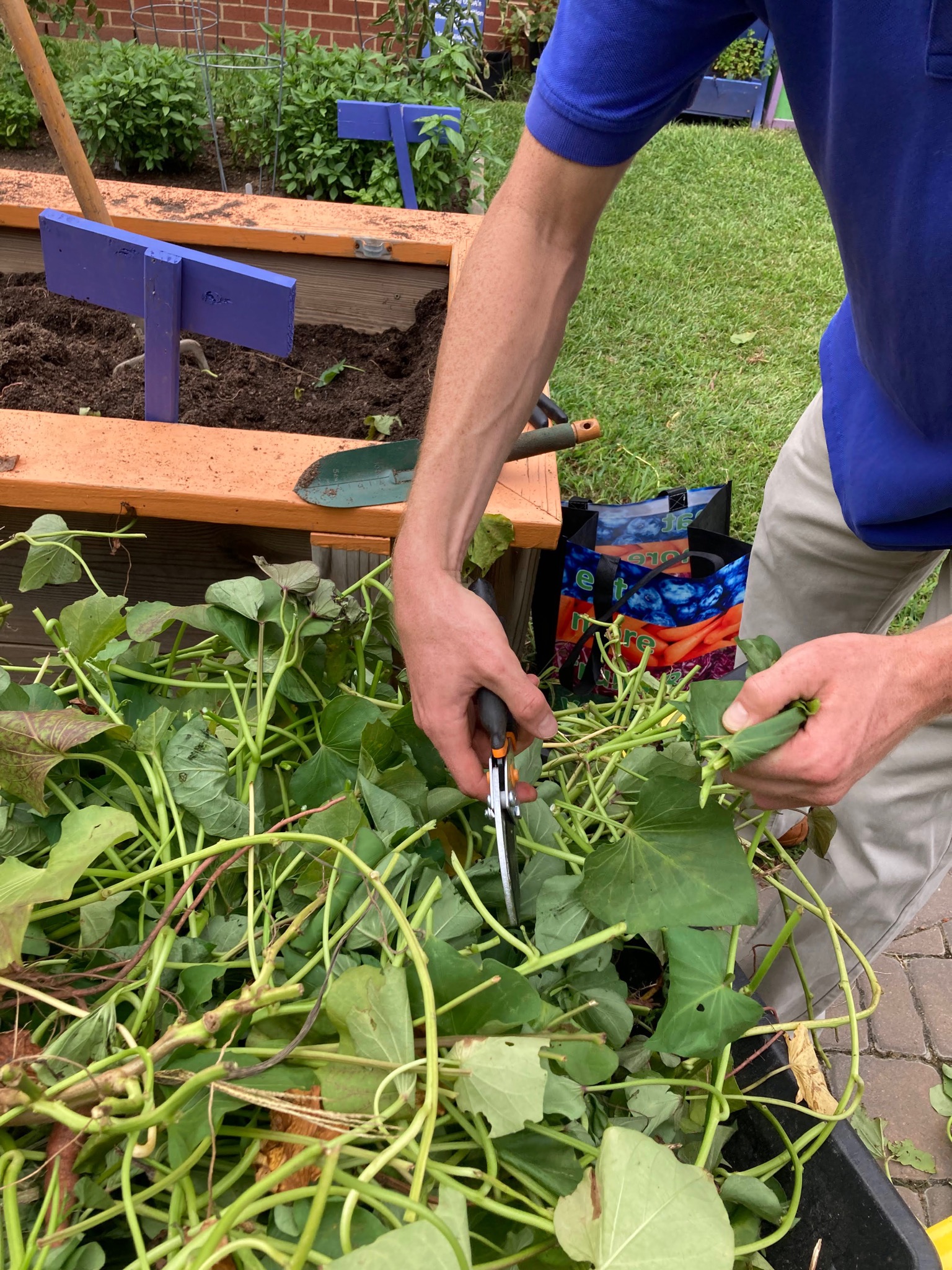
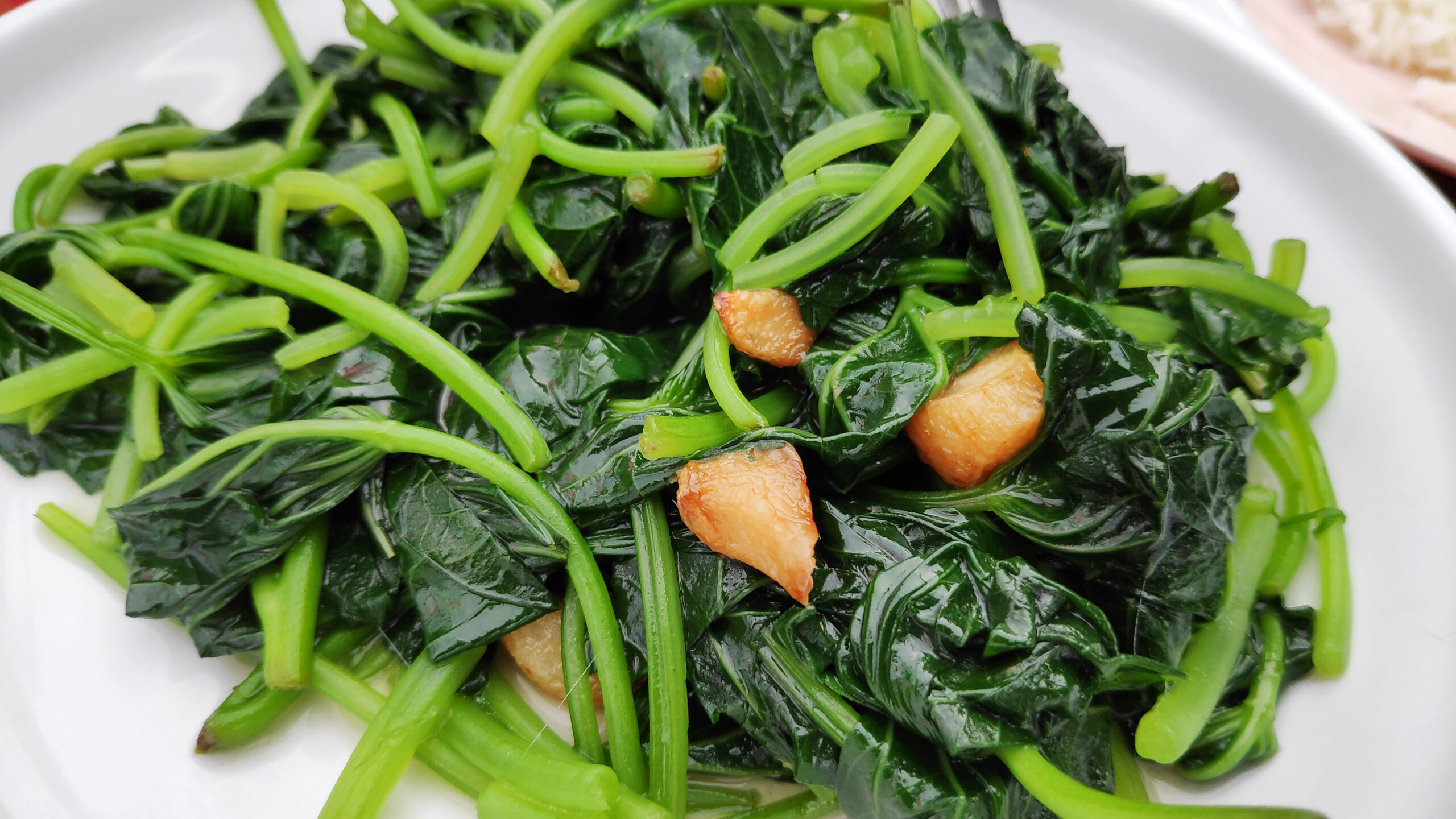
Take a look back at how and when we started the Poe Center’s sweetpotatoes
in our June Garden-to-Kitchen video.
Follow our Garden to Kitchen blog each month for great tips
and insights on growing and cooking edible plants:
Get this great content delivered directly to your inbox.
Subscribe to our monthly nutrition email newsletter.


